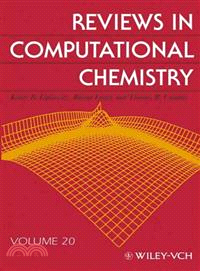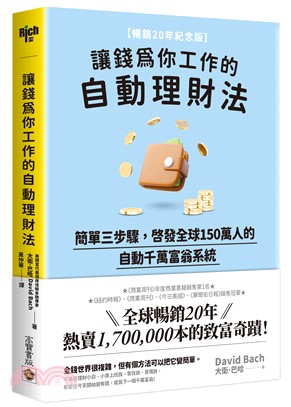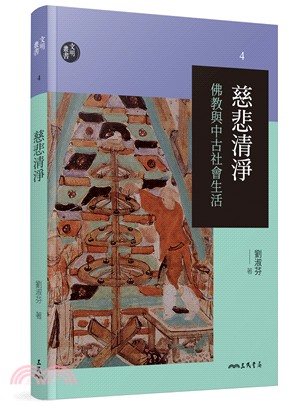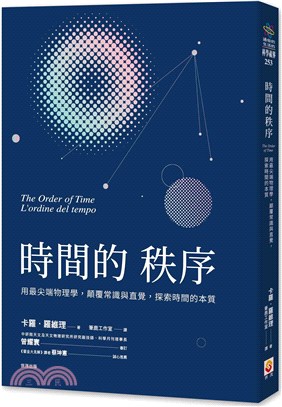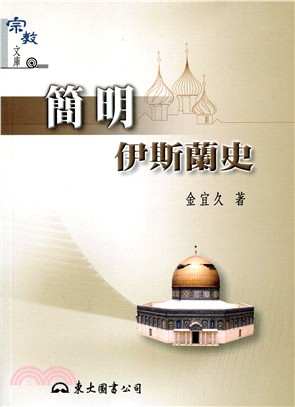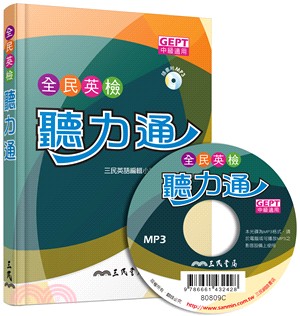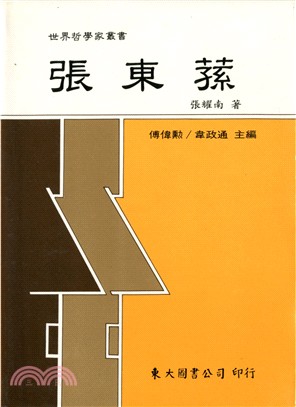Reviews In Computational Chemistry, Volume 20
商品資訊
商品簡介
FROM REVIEWS OF THE SERIES
"Reviews in Computational Chemistry remains the most valuable reference to methods and techniques in computational chemistry."
-JOURNAL OF MOLECULAR GRAPHICS AND MODELING
"One cannot generally do better than to try to find an appropriate article in the highly successful Reviews in Computational Chemistry. The basic philosophy of the editors seems to be to help the authors produce chapters that are complete, accurate, clear, and accessible to experimentalists (in particular) and other nonspecialists (in general)."
-JOURNAL OF THE AMERICAN CHEMICAL SOCIETY
作者簡介
目次
Introduction.
A Story of Valence Bond Theory, Its Rivalry with Molecular Orbital Theory, Its Demise, and Eventual Resurgence.
Roots of VB Theory.
Origins of MO Theory and the Roots of VB–MO Rivalry.
The ‘‘Dance’’ of Two Theories: One Is Up, the Other Is Down.
Are the Failures of VB Theory Real Ones?
Modern VB Theory: VB Theory Is Coming of Age.
Basic VB Theory.
Writing and Representing VB Wave Functions.
The Relationship between MO and VB Wave Functions.
Formalism Using the Exact Hamiltonian.
Qualitative VB Theory.
Some Simple Formulas for Elementary Interactions.
Insights of Qualitative VB Theory.
Are the ‘‘Failures’’ of VB Theory Real?
Can VB Theory Bring New Insight into Chemical Bonding?
VB Diagrams for Chemical Reactivity.
VBSCD: A General Model for Electronic Delocalization and Its Comparison with the Pseudo-Jahn–Teller Model.
What Is the Driving Force, s or p, Responsible for the D6h Geometry of Benzene?
VBSCD: The Twin-State Concept and Its Link to Photochemical Reactivity.
The Spin Hamiltonian VB Theory.
Theory.
Applications.
Ab Initio VB Methods.
Orbital-Optimized Single-Configuration Methods.
Orbital-Optimized Multiconfiguration VB Methods.
Prospective.
Appendix.
A.1 Expansion of MO Determinants in Terms of AO Determinants.
A.2 Guidelines for VB Mixing.
A.3 Computing Mono-Determinantal VB Wave Functions with Standard Ab Initio Programs.
Acknowledgments.
References.
2. Modeling of Spin-Forbidden Reactions (Nikita Matsunaga and Shiro Koseki).
Overview of Reactions Requiring Two States.
Spin-Forbidden Reaction, Intersystem Crossing.
Spin–Orbit Coupling as a Mechanism for Spin-Forbidden Reaction.
General Considerations.
Atomic Spin–Orbit Coupling.
Molecular Spin–Orbit Coupling.
Crossing Probability.
Fermi Golden Rule.
Landau–Zener Semiclassical Approximation.
Methodologies for Obtaining Spin–Orbit Matrix Elements.
Electron Spin in Nonrelativistic Quantum Mechanics.
Klein–Gordon Equation.
Dirac Equation.
Foldy–Wouthuysen Transformation.
Breit–Pauli Hamiltonian.
Zeff Method.
Effective Core Potential-Based Method.
Model Core Potential-Based Method.
Douglas–Kroll Transformation.
Potential Energy Surfaces.
Minimum Energy Crossing-Point Location.
Available Programs for Modeling Spin-Forbidden Reactions.
Applications to Spin-Forbidden Reactions.
Diatomic Molecules.
Polyatomic Molecules.
Phenyl Cation.
Norborene.
Conjugated Polymers.
CH(2II) + N2 -- HCN + N(4S).
Molecular Properties.
Dynamical Aspects.
Other Reactions.
Biological Chemistry.
Concluding Remarks.
Acknowledgments.
References.
3. Calculation of the Electronic Spectra of Large Molecules (Stefan Grimme).
Introduction.
Types of Electronic Spectra.
Types of Excited States.
Theory.
Excitation Energies.
Transition Moments.
Vibrational Structure.
Quantum Chemical Methods.
Case Studies.
Vertical Absorption Spectra.
Circular Dichroism.
Vibrational Structure.
Summary and Outlook.
Acknowledgments.
References.
4. Simulating Chemical Waves and Patterns (Raymond Kapral).
Introduction.
Reaction–Diffusion Systems.
Cellular Automata.
Coupled Map Lattices.
Mesoscopic Models.
Summary.
References.
5. Fuzzy Soft-Computing Methods and Their Applicationsin Chemistry (Costel Saˆrbu and Horia F. Pop).
Introduction.
Methods for Exploratory Data Analysis.
Visualization of High-Dimensional Data.
Clustering Methods.
Projection Methods.
Linear Projection Methods.
Nonlinear Projection Methods.
Artificial Neural Networks.
Perceptron.
Multilayer Nets: Backpropagation.
Associative Memories: Hopfield Net.
Self-Organizing Map.
Properties.
Mathematical Characterization.
Relation between SOM and MDS.
Multiple Views of the SOM.
Other Architectures.
Evolutionary Algorithms.
Genetic Algorithms.
Canonical GA.
Evolution Strategies.
Evolutionary Programming.
Fuzzy Sets and Fuzzy Logic.
Fuzzy Sets.
Fuzzy Logic.
Fuzzy Clustering.
Fuzzy Regression.
Fuzzy Principal Component Analysis (FPCA).
Fuzzy PCA (Optimizing the First Component).
Fuzzy PCA (Nonorthogonal Procedure).
Fuzzy PCA (Orthogonal).
Fuzzy Expert Systems (Fuzzy Controllers).
Hybrid Systems.
Combinations of Fuzzy Systems and Neutral Networks.
Fuzzy Genetic Algorithms.
Neuro-Genetic Systems.
Fuzzy Characterization and Classification of the Chemical Elements and Their Properties.
Hierarchical Fuzzy Classification of Chemical Elements Based on Ten Physical Properties.
Hierarchical Fuzzy Classification of Chemical Elements Based on Ten Physical, Chemical, and Structural Properties.
Fuzzy Hierarchical Cross-Classification of Chemical Elements Based on Ten Physical Properties.
Fuzzy Hierarchical Characteristics Clustering.
Fuzzy Horizontal Characteristics Clustering.
Characterization and Classification of Lanthanides and Their Properties by PCA and FPCA.
Properties of Lanthanides Considered in This Study.
Classical PCA.
Fuzzy PCA.
Miscellaneous Applications of FPCA.
Fuzzy Modeling of Environmental, SAR and QSAR Data.
Spectral Library Search and Spectra Interpretation.
Fuzzy Calibration of Analytical Methods and Fuzzy Robust Estimation of Location and Spread.
Application of Fuzzy Neural Networks Systems in Chemistry.
Applications of Fuzzy Sets Theory and Fuzzy Logic in Theoretical Chemistry.
Conclusions and Remarks.
References.
6. Development of Computational Models for Enzymes, Transporters, Channels, and Receptors Relevant to ADME/Tox (Sean Ekins and Peter W. Swaan).
Introduction.
ADME/Tox Modeling: An Expansive Vision.
The Concerted Actions of Transport and Metabolism.
Metabolism.
Transporters.
Approaches to Modeling Enzymes, Transporters, Channels, and Receptors.
Classical QSAR.
Pharmacophore Models.
Homology Modeling.
Transporter Modeling.
Applications of Transporters.
The Human Small Peptide Transporter, hPEPT1.
The Apical Sodium-Dependent Bile Acid Transporter.
P-Glycoprotein.
Vitamin Transporters.
Organic Cation Transporter.
Organic AnionTransporters.
Nucleoside Transporter.
Breast Cancer Resistance Protein.
Sodium Taurocholate Transporting Polypeptide.
Enzymes.
Cytochrome P450.
Epoxide Hydrolase.
Monoamine Oxidase.
Flavin-Containing Monooxygenase.
Sulfotransferases.
Glucuronosyltransferases.
Glutathione S-transferases.
Channels.
Human Ether-a-gogo Related Gene.
Receptors.
Pregnane X-Receptor.
Constitutive Androstane Receptor.
Future Developments.
Acknowledgments.
Abbreviations.
References.
Author Index.
Subject Index.
主題書展
更多書展本週66折
您曾經瀏覽過的商品
購物須知
外文書商品之書封,為出版社提供之樣本。實際出貨商品,以出版社所提供之現有版本為主。部份書籍,因出版社供應狀況特殊,匯率將依實際狀況做調整。
無庫存之商品,在您完成訂單程序之後,將以空運的方式為你下單調貨。為了縮短等待的時間,建議您將外文書與其他商品分開下單,以獲得最快的取貨速度,平均調貨時間為1~2個月。
為了保護您的權益,「三民網路書店」提供會員七日商品鑑賞期(收到商品為起始日)。
若要辦理退貨,請在商品鑑賞期內寄回,且商品必須是全新狀態與完整包裝(商品、附件、發票、隨貨贈品等)否則恕不接受退貨。




